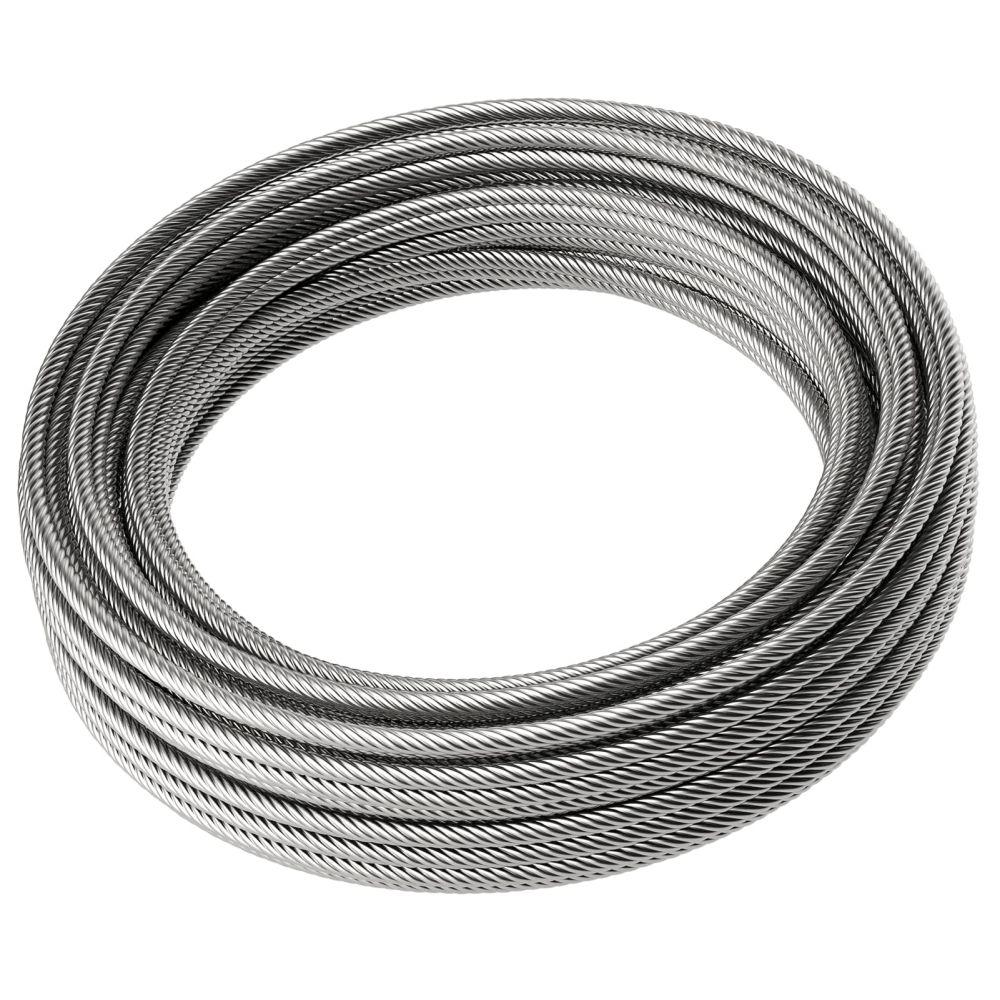
Stainless wire ropes are vital for their strength and corrosion resistance. Blogs offer insights for professionals and DIY enthusiasts on their uses and benefits. Here’s what you can typically expect to find in these blogs:
The electrical conductivity of 304 stainless steel wire makes it suitable for use in electronic components and devices.
304 stainless steel, also known as A2 stainless steel, is an austenitic steel alloy that contains approximately 18-20% chromium and 8-12% nickel. The addition of these elements provides the alloy with its corrosion resistance, as the chromium forms a passive oxide layer on the surface of the material, protecting it from the elements. This passive layer is self-healing, meaning that if the surface is scratched or damaged, the oxide layer will reform, maintaining the corrosion resistance of the material.
One of the key strengths of 304 stainless steel wire is its tensile strength, which refers to the ability of the material to withstand being pulled apart without breaking. 304 stainless steel wire has a tensile strength of around 55,000 psi (pounds per square inch), significantly higher than many other materials used in wire production. This high tensile strength makes 304 stainless steel wire ideal for use in applications where strength and durability are essential, such as in the construction of bridges, buildings, and other infrastructure projects.
In addition to its tensile strength, 304 stainless steel wire exhibits excellent ductility, the ability of a material to be deformed without breaking. This property is particularly important in wire applications, as it allows the material to be easily shaped and manipulated without losing its structural integrity. The ductility of 304 stainless steel wire is due to its austenitic crystal structure, which allows for greater deformation before failure.
Another key advantage of 304 stainless steel wire is its resistance to various environmental factors. The chromium content in the alloy forms a passive oxide layer that protects the material from corrosion. Additionally, 304 stainless steel wire is resistant to high temperatures, making it suitable for use in applications where temperature fluctuations may occur. This resistance to temperature changes is due to the nickel content in the alloy, which stabilizes the austenitic crystal structure and prevents the formation of brittle phases at elevated temperatures.
Due to its strength and corrosion resistance, 304 stainless steel wire is often used in the construction of bridges, buildings, and other infrastructure projects.
The automotive industry uses 304 stainless steel wire for various components, such as springs, fasteners, and suspension systems.
The electrical conductivity of 304 stainless steel wire makes it suitable for use in electronic components and devices.
304 stainless steel wire is used in medical applications, such as surgical instruments and implants, due to its biocompatibility and corrosion resistance.
The corrosion resistance of 304 stainless steel wire makes it ideal for use in marine applications, such as boat rigging and anchor chains.
304 stainless steel wire is a versatile and durable material with a wide range of applications. Its strength, corrosion resistance, and temperature resistance make it an ideal choice for various industries and applications. Whether used in construction, automotive, electronics, medical, or marine settings, 304 stainless steel wire consistently delivers exceptional performance and reliability.
Stainless wire ropes are vital for their strength and corrosion resistance. Blogs offer insights for professionals and DIY enthusiasts on their uses and benefits. Here’s what you can typically expect to find in these blogs: